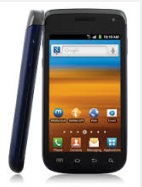MY SCARIEST HELP DESK MEMORY
One of my scariest help desk memories was when I was told we were no longer providing laptops to our clients. Instead, our clients would use their own computers to access our new data entry applications that were web-based rather than the previous applications that had to be installed on a computer’s hard drive.
It was a scary for me because now we would support every internet browser running on every piece of computer hardware configured in every way known to man. The reason you see the word standardization so much in computer literature is because IT folks like to know what they’re dealing with. What are the hardware specifications? Will the software work on our hardware platform(s)? How does the software work? What are the known problems with the hardware, software, and their integration?
FLASHBACK
I flashed back to that memory when I read in McGreal and Elliott (2008) that the educational possibilities are unlimited and that learning can be universally accessible due the possibilities afforded by mobile technology. While there was a lot of excitement expressed, there was not very much concrete evidence of the exact uses of this technology for educational purposes in McGreal and Elliott (2008).
Bates and Sangra (2011) discuss two uses – 1) RSS feeds to mobile phones 2) Student data collection via real-time polling, interviews, photos and video for project work, post to class web site. However, mobile devices are not a crucial element for learners to enjoy most of these uses. Many of the same thing could be done on their computer. It is more convenient to do these activities on an iPad, iPhone or a Droid that the learner carries with them. But if learners don’t own an iPad, iPhone or Droid, but do own a PC or laptop, they would not be excluded from every opportunity.
SCREEN SIZES
While mobile learning sounds incredible, great, the next big thing in online education the actual implementation appears to still be in its infancy (Bates & Sangra, 2011). For me, the crucial question is how are we going to accommodate the various screen sizes that the plethora of mobile devices boasts? There is no standardization as every company is scrambling to find the ideal size that is cost effective while being not too large and not too small!
Waingankar (2011) talks of developing web pages for mobile devices and feels that the “worst … challenge posed [is] by the fact that there is no standard screen size or resolution that you can take for granted.” There’s that standardization thing again. It is hard to design when there is no standard!
Let’s look at two mobile devices. The screen size of my Samsung Galaxy Exhibit is in the neighborhood of 3” x 2” or 7cm x 5cm. Apple iPads generally have a screen size in the neighborhood of 9” x 7” or 23cm x 18cm. So, the bad thing is that the screen on my Droid is not as big as an iPad screen. Something that is readable on an iPad will most likely be unreadable on my Droid. Sure, I can expand the screen and use my finger to swish back and forth. But it doesn’t make for a great user experience or a great learning experience. In those situations, I abandon my Droid and open my laptop which has an approximate screen size of 12” x 7.5” or 30.5cm x 19cm.
ONE MORE BARRIER
I’ve taken the liberty of putting in bold barriers listed by Bates and Sangra (2011) :
The real potential of mobile learning is just over the horizon, waiting for the next stage of technology integration that will include low cost, wide-band connections, new interfaces (perhaps including voice recognition), software applications that are better suited for study purposes, and above all new designs for teaching that enable the unique advantages of mobile learning to be better exploited (p. 39).
I humbly submit the lack of standardized screen sizes as another barrier to adoption of mobile devices for use as an educational tool. Schools will most likely have to adopt the suggestion that Waingankar (2011) posts on his blog to limit the devices that can be supported.
REFERENCES
Bates, A. W., & Sangra, A. (2011). Recent developments in technology and education. Managing Technology in Higher Education: Strategies for Transforming Teaching and Learning (pp. 25-51). San Francisco, CA: Jossey-Bass, An Imprint of Wiley.
McGreal R. & Elliott, M. (2008). Technologies of Online Learning (E-learning). In T. Anderson. (Ed.), Theory and practice of online learning (Second Edition). (pp. 143-165). Retrieved January 24, 2010 from http://www.aupress.ca/books/120146/ebook/06_Anderson_2008-Theory_and_Practice_of_Online_Learning.pdf
Waingankar, Sankalp. (2011, February 9). Tackling the screen resolution challenge on mobile devices [Blog post]. Retrieved http://www.techrepublic.com/blog/webmaster/tackling-the-screen-resolution-challenge-on-mobile-devices/126



I do not believe that the devices should be limited. Technology tends to advance in the direction of need. If more people need devices that can support normal web page sizes, resolution and speed those devices will come to market. Already phones have been announced that can project onto a surface and those projections are responsive in the same manner as a touch screen. Also flex screen capabilities have shown up at some of the tech conventions. Screens that are flexible and enlarge the viewing area.
Technology will rise to the needs to make entertainment and education possible. The more we need it the faster the advances will come. From those of us from the baby boomer generation,”Build it and they will buy.”
Joanne,
Great blog so far! Be sure that the date stamp is on (the date you post is visible) – it’s important that I see ongoing contributions to your blog over the duration of the activity.
Cindy
Cindy,
The date stamp appears at the bottom of each post. The font is small and gray so it doesn’t help with readability 🙂
Kind Regards, Joanne
Hi Joanne~
You bring up some valid points in this post. Screen size is very important, especially to those who might have sight issues. This is one reason why I still prefer my 17″ laptop over any other method of online education; it simply makes things easier for me without the unnecessary eye strain.
I’m still a bit fearful of an educational setting that relies on mobile devices for the primary reason that they tend to be a distraction to students. I’m all for putting the phones away and focusing on the learning at hand. I know that is a simplistic viewpoint, but once the phone is on and in hand, how easy is it to ignore the classroom events in favor of checking Facebook friends?
Of course, I am considering getting an iPad so my viewpoint could change in the future!
Brenda